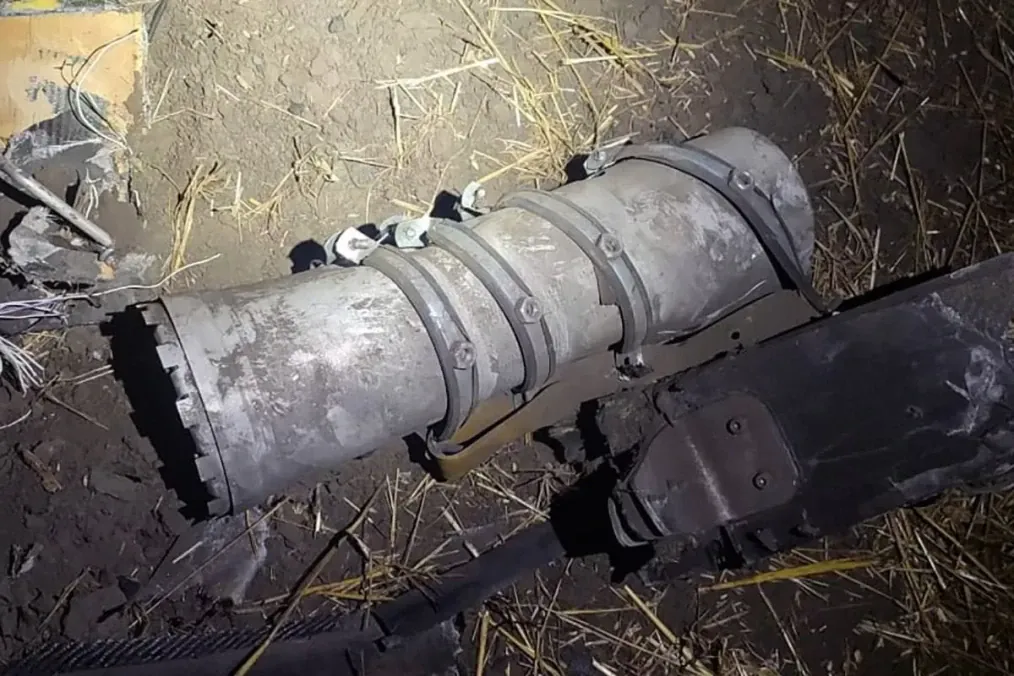From Kamikaze Strikes To Mine-Laying Monsters — Russia Adapts Shahed-136 To Drop Anti-Tank Mines, Target Ukraine’s Supply Lines

After wreaking havoc on Ukraine for over three years, the notorious Shahed-136 kamikaze drone is now being used to lay anti-tank mines. The report comes as the Russian forces push further inside Ukraine ahead of Putin-Trump talks in Alaska.
A latest assessment published by the Institute of the Study of War (ISW) states that the Russian forces are consistently implementing and fielding technological drone innovations to strike Ukrainian forces’ rear and near rear.
Citing footage posted by the Russian military, bloggers, the ISW report stated, “Russian forces have adapted their indigenous Geran drone (the Russian analogue to the Iranian Shahed-136) to carry anti-tank mines that enable operators to remotely mine Ukrainian forces’ rear and near rear.” The report noted that Russian Shahed-type drones are now capable of carrying two mines.
The Shahed-136 drones have reportedly been equipped with two KPTM-3 cassettes, each containing one PTM-3 anti-tank mine, mounted under the drone’s wings. Each canister contains one mine that is detonated by a small explosive charge mid-flight.
The video showing the release of mines from a Shahed-136 was first posted by the Russian NGP-Razvedka military Telegram channel on August 10 with a message that read: “Today on our channel is the premiere of the latest drone tactics against ground-moving targets.”
“The Geranium conducts remote mining of enemy supply routes in real time, resulting in one transport unit going down, while another with shredded infantry manages to escape, though not very far in such a state,” NGP-Razvedka explained in the message. “The guidance system will be refined, the tactics of use expanded, and the logistics of the Nazis will be turned into a complete nightmare. The range of the Geranium is over 1,000 km (621 miles), do you get what that means?”
These drones are likely to drop mines with precision, either autonomously along pre-programmed routes or potentially via man-in-the-loop control for more agile targeting near front lines. It is currently unclear which mode the drone is using to lay mines. However, we know that the 1,000-kilometre range of Shahed-136 will enable the drone to mine deep behind Ukrainian lines.
The Shaheds would be able to mine roads, fields, and other areas, posing significant risks to military vehicles, civilians, and emergency responders.
Although not being implemented on a large scale yet, the strategy has been seen in places like Chernihiv and Sumy, where the Russians have intensified the conflict. Experts from Ukraine have warned that if Russia expands this capability, even a few drones could disperse dozens of mines, allowing Russia to disrupt Ukrainian supply routes, logistics, and agricultural activities by scattering mines on roads, fields, and other critical areas.

While this is the first time that this has been caught on camera, the National Police of Ukraine (NPU) earlier this month informed the public that the drones were being used to lay mines, warning the people to stay cautious and vigilant. The NPU also published photos that showed remnants of wiring, components, and cassettes attached to the drone’s wings.
“In addition to a powerful warhead, they may also contain mine traps or sensors that can trigger an explosion if tampered with,” the service said in a statement at the time.
In many cases, the mines remain active post-attack, creating persistent hazards, which means they can target mobile fire groups, civilian infrastructure, and emergency response teams. Thus, compounding the damage and causing civilian casualties.
Ukrainian forces have intercepted some of these drones, with one instance involving an anti-Shahed FPV drone targeting a mine-carrying Shahed.
This is not the first time that anti-tank mines have been integrated into aerial warfare. Earlier, for instance, Kyiv used multi-rotor “bomber” drones to deploy PTM-3 and TM-62 mines.
Previous reports in Ukrainian media suggested that Russian forces had equipped the Lancet loitering munition with a new warhead in the form of an anti-tank mine. However, the use of long-range Shahed-136 drones allows for deeper penetration, giving it a strategic advantage in area denial.
It is pertinent to note here that the use of Shahed-136 for laying mines comes as Russia is pushing deeper inside Ukraine ahead of a summit between Russian President Vladimir Putin and US President Donald Trump in Alaska later this month.
The meeting has been planned to discuss ways to end the grinding war, and the Russian side evidently wants to make significant gains to use it as a bargaining chip.

Shahed-136 Continues To Terrorise Ukraine
As Russia’s war in Ukraine drags on, the Iranian-designed Shahed one-way attack drones, now produced domestically in Russia as the Geran 2, have become a central element of Moscow’s offensive strategy.
These low-cost yet highly effective unmanned aerial vehicles (UAVs) have caused substantial damage to Ukraine’s critical infrastructure, particularly its power grid.
Even though the Shahed only costs about US$20,000 per unit, its impact as a loitering munition has made it a serious threat, as evidenced by the continuous waves of drone assaults that have destroyed or seriously damaged more than three-quarters of Ukraine’s electrical infrastructure.
With a seven-foot wingspan and a warhead weighing up to 100 pounds or about 45 kilograms, the drone can travel up to 600 miles or about 1,000 kilometers, delivering devastating payloads to critical Ukrainian infrastructure.
Since its introduction on the Ukrainian battlefield, it has been known as a “moped” or “lawnmower” because of its piston-driven engine, which can reach speeds of about 115 mph.
Russia has made extensive modifications to the Iranian-designed Shahed-136 drone since acquiring the technology in 2022. These changes aim to enhance its lethality, survivability, range, and resistance to countermeasures like jamming and interception.
Some of the modifications given to the drone include a switch from piston engines to jet engines, enabling higher speeds and altitudes.
Additionally, Russia has modified the warhead that can be carried by Shahed-136. Earlier, for instance, it increased warhead size from the original 40-50 kilograms to 80-90 kilograms, with options for multipurpose designs including cumulative, fragmentation, blast, and incendiary effects to maximize the impact and damage.
Last year, Russia upgraded the drones and reportedly equipped them with electro-optic sensors. Typically, EO sensors can deliver visual images that enable operators to identify targets accurately.
These sensors can identify targets effectively so long as there is excellent visibility. EO sensors combine optical and infrared detection capabilities. The height at which the sensor is mounted and its sensitivity determine the detection range.
The UAV-based optical sensors not only command height but are also mobile, facilitating surveillance of vast swathes of land.
As per the latest reports, Russia is now working on integrating Artificial Intelligence (AI) into the Shahed airframe, making it more lethal and enhancing its survivability. This was discovered by Ukrainian intelligence officials in June after one of these drones was downed.
Russia has also significantly ramped up the production capacity for these small and devastating war machines. A report published in The Economist on May 25 claimed that Russia is producing about 100 Shaheds per day, which is about four to five times their estimated daily production rate in late 2024.
The report, citing unidentified sources in Ukrainian Military Intelligence, noted that Russia intends to boost production to 500 drones per day by an undisclosed future date.
With the scaling of production, enhancement in range and weaponry, and addition of mines, the Shahed-136 is becoming the cheapest and most potent weapon unleashed on Ukraine.
Russia launched a record-breaking 6,129 attacks against Ukraine using Shahed drones this July, up from 5,337 attacks in June. The attacks are only expected to see an uptick in the near future
- Questions and Answers
- Opinion
- Motivational and Inspiring Story
- Technology
- Live and Let live
- Focus
- Geopolitics
- Military-Arms/Equipment
- Безопасность
- Economy
- Beasts of Nations
- Machine Tools-The “Mother Industry”
- Art
- Causes
- Crafts
- Dance
- Drinks
- Film/Movie
- Fitness
- Food
- Игры
- Gardening
- Health
- Главная
- Literature
- Music
- Networking
- Другое
- Party
- Religion
- Shopping
- Sports
- Theater
- Health and Wellness
- News
- Culture

